![]()
![]()
![]()
Use LEFT and RIGHT arrow keys to navigate between flashcards;
Use UP and DOWN arrow keys to flip the card;
H to show hint;
A reads text to speech;
96 Cards in this Set
- Front
- Back
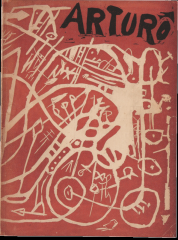
|
Tomas Maldonado Cover of Arturo no. 1 1944 -'44 journal of Arturo -Argentinian -Madi |
|
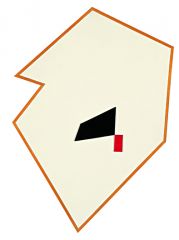
|
Tomas Maldonado Untitled 1945 Tempera on board and enamel on cardboard -Madi |
|
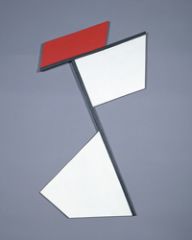
|
Lidy Prati Concrete 1945 Oil on board -Madi |
|
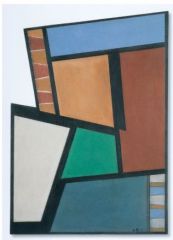
|
Carmelo Arden Quin Green Plane 1945 Gouache on cardboard -Madi |
|
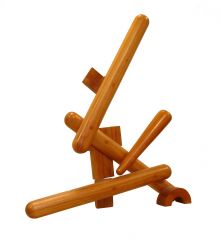
|
Gyula Kosice Royi 1944 Wood -Madi |
|
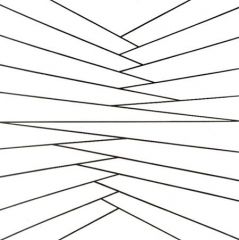
|
Waldemar Cordeiro Visible Idea 1956 Tempera on wood -concrete |
|
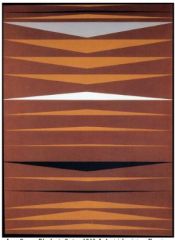
|
Ivan Serpa Rhythmic Strips 1953 Industrial paint on Eucatex -concrete |
|

|
Geraldo de Barros Movement Counter Movement 1952 Enamel on Kelmite -concrete |
|
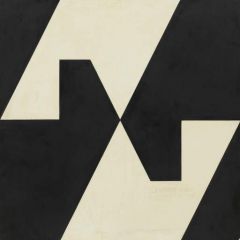
|
Lygia Clark Planes on Modulated Surface no. 4 1957 Industrial paint on wood -neo-concrete |
|
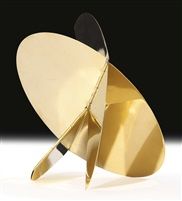
|
Lygia Clark Sundial from Bichos series 1960 Aluminum with gold patina -neo-concrete |
|
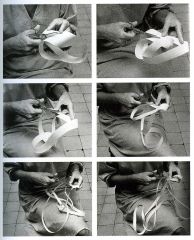
|
Lygia Clark Caminhando (Walking) 1963 Photographs -neo-concrete |
|
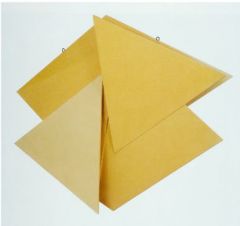
|
Helio Oiticica Spacial Relief 1959 Synthetic polymer paint on wood -Neo-concrete |
|
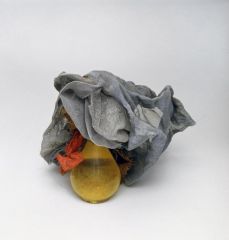
|
Helio Oiticica Glass Bolide 5, Homage to Mondrian 1965 Oil with polyvinyl acetate emulsion on nylon mes and burlap, glass, paint and pigment suspended in water -neo-concrete |
|
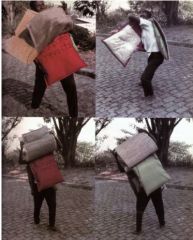
|
Helio Oiticica Parangole 1967 -neo-concrete |
|
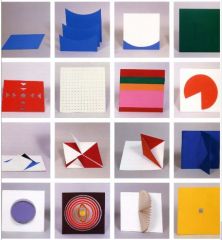
|
Lygia Pape Book of Creation 1959-1960 Gouache on cardboard -Neo-Concrete |
|

|
Alejandro Otero Colorrhythm 4 1956 Enamel on plywood -Kinetic - late '40s goes to Paris -Looking at European avant-garde and Picasso |
|
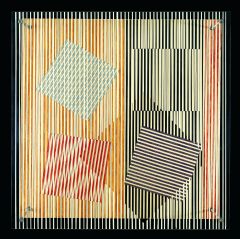
|
Jesus Rafael Soto Kinetic Structure with Geometric Elements 1955 Acrylic, Plexiglas, and wood -Kinetic -Moire effect - looking at Mondrian> shift from systematized to bodily and less controlled |
|

|
Jesus Rafael Soto Penetrable 1971 Nylon and metal Pampatar Venezuela -Kinetic -expansion to immersive pieces - more egalitarian> collective experience -asking people to think politically> political liberation and politics of liberation |
|
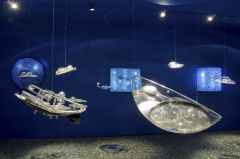
|
Gyula Kosice The Hydrospatial City 1946-1972 Acrylic Plexiglas, paint, and light -Kinetic |
|

|
Julio Le Parc Seven Surprising Movements 1966 Mixed Media on control panel -Kinetic |
|
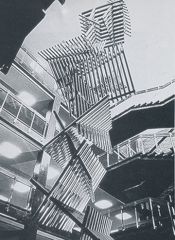
|
Gego Sculpture in the Banco Industrial de Venezuela 1962 Aluminum and stainless steel pipes Banco Industrial de Venezuela, Caracas - '39 Caracas, German -studied architecture - '50s switches to fine art -Critical of Kinetic Art |
|
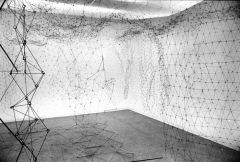
|
Gego Gran Reticularea 1969 Wire Galeria de Arte Nacional |
|
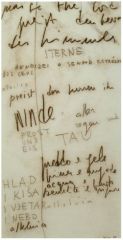
|
Mira Schendel Monotype 1965 Ink on Japanese paper - Sao Paulo, Swiss, grew up in Italy, '39 leaves Milan WWII, spends war in Yugoslavia, '49 goes to Brazil -Studied philosophy - Skeptical of neo-concretism |
|
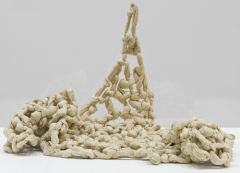
|
Mira schendel Droguinhas (Little Nothings) 1966 Japanese paper |
|
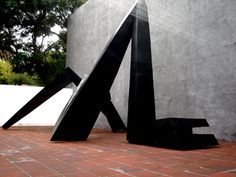
|
Mathias Goeritz The Serpent 1953 Painted Steel Courtyard of Museo Experimental El Eco Mexico City - Goeritz born and educated in Germany> '40 to Morocco>'45 Spain>'49 Mexico to be professor>'50s Mexico City -anti Mexican Muralism - Post WWII building boom Mexico City -Wasn't interested in crafting Mexican Identity that was legible -Eco, experimental museum -use of industrial materials - sculpture accessible |
|

|
Mathias Goeritz and Luis Barragan Towers of Satellite City 1957-1958 Concrete Mexico City - use of industrial materials -hired craftsmen to build> show the labor behind the building boom |
|
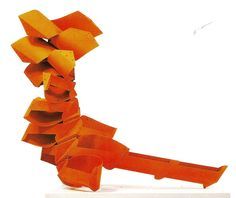
|
Edgar Negret Staircase 1972 Painted Aluminum - Spanish, goes to NYC, works in Columbia |
|
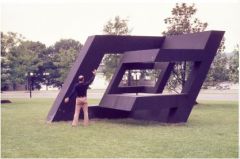
|
Eduardo Ramirez Villamizar From Columbia to John F Kennedy 1973 Painted sheet iron construction Gardens on Kennedy Center, DC |
|

|
Jose Luis Cuevas Self Portrait with the Young Ladies of Avignon, from Tribute to Picasso series 1973 Pen and ink on paper -neo figuration |
|
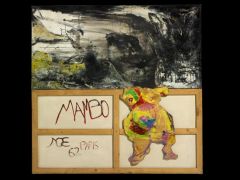
|
Luis Felipe Noe Mambo 1962 Mixed Media - neo figuration |
|
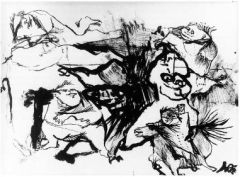
|
Luis Felipe Noe Untitled 1962 Ink on paper - neo figuration |
|
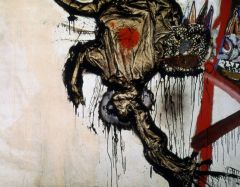
|
Jorge de la Vega Mirror at the End of the Stair 1963 Collage and oil on canvas -neo figuration |
|
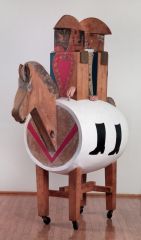
|
Marisol Escobar Generals 1961-1962 Mixed Media -Pop - Education in Paris, born in France> goes to NYC> Parents Venezuela> goes between Paris and NYC - Simon Bolivar Venezuelan hero, used as symbol of Venezuela under both dictatorship and democracy |
|
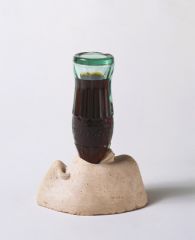
|
Marisol Escobar Love 1962 Plaster and Coca-Cola Bottle -pop - Coca-Cola as neo-colonial expansion |
|

|
Marta Minujin and Ruben Santantonin Mayhem or The Challenge 1965 Installation -pop -Argentinean -'55-'83 in and out of dictatorship -'60s unsuccessful attempt at democracy -Reached 30,000 people of middle and upper classes -viewer placed in unexpected sensory experiences |
|

|
Marta Minujin Obelisk of Sweet Rolls 1980 Performance Buenos Aires -pop - allowed under repressive dictatorship, subversive |
|
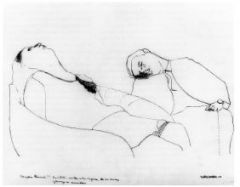
|
Beatriz Gonzalez Tragedy of Passion! Ex-Military Man Murders Wife of Friend and Kill Self 1967 Ink on paper -pop |
|
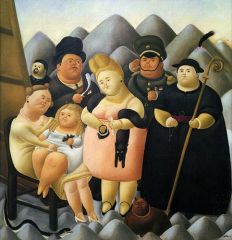
|
Fernando Botero The President's Family 1967 Oil on canvas -pop |
|

|
Helio Oiticica Tropicalia 1966-1967 Mixed Media -New Objectivity |
|
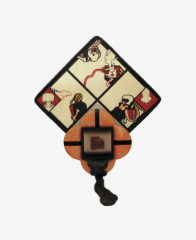
|
Antonio Dias Note on an Unforseen Death 1956 Acrylic, oil, vinyl, and Plexiglas on wood and fabric - New Objectivity - use cartoon and comic visual language - blurring conventions of painting and sculpture -colors of comics and caution -repetition of iconography -comic suggests legible narrative which is withheld |
|
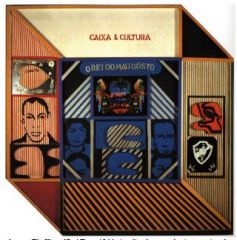
|
Rubens Gerchman The King of Bad Taste 196 Acrylic, decorated mirror, painted wood cutouts on wood - New Objectivity - Play w/ visual language, pop culture, and how it operates - less political connection |
|

|
Nelson Leirner Detail of Adoration: Altar of Roberto Carlos 1966 Mixed Media Installation |
|

|
Cildo Meireles Insertions into Ideological Circuits: Coca-Cola Project 1970 Coca-Cola Bottle and transferred text - Conceptual -trained in Brazil - trying to understand how objects circulate and intervene with this circulation>use preexisting circuits -identify these circuits and power involved in it -place counter information -anti imperialist messages, emblem of US economic power and US backing of Brazil's military dictatorship - Viewed Duchamp's action as aimed for art world and his for the the public |
|
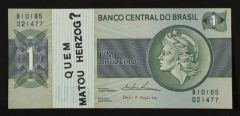
|
Cildo Meireles Insertions into Ideological Circuits: Banknote Project (Who Killed Herzog?) 1975 Banknote and ink -conceptual art |
|
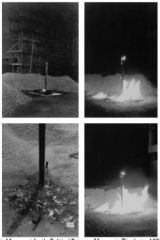
|
Cildo Miereles Totemic Monument for the Political Prisoner, Homage to Tiradentes 1970 Performance -conceptual art |
|
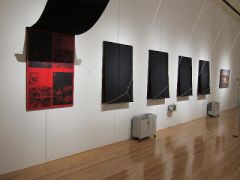
|
Antonio Manuel Repression Once Again: This is the Consequence 1968 Mixed Media -conceptual art - Portuguese - '58 to Brazil - How newspapers function in Brazil |
|
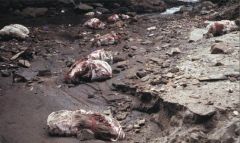
|
Artur Barrio Unleashing Confusion on the Streets... Situation 1970 Performance -conceptual art -Situation, aggressive actions |
|
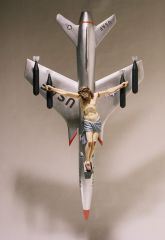
|
Leon Ferrari Western and Christian Civilization 1965 Polyester, wood, and cardboard |
|
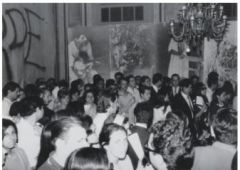
|
Tucuman Arde group Photograph of Inauguration of Collective Political-Experimental and Mass-Mediatic Event 1968 Argentine Worker' Central Union, Rosario -conceptual -government shut down Tucuman sugar refinery in a poor area> said they would work with the US to bring new refineries, restore jobs, but that never happened>information about this was censored -group exhibited at labor unions and meetings -created publications to bring to light conditions |
|
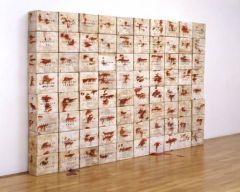
|
Luis Camnitzer Leftovers 1970 Mixed Media -Uruguay -conceptual art |
|

|
Luis Camnitzer Her Fragrance Lingered On, from the Uruguayan Torture Series 1983 Photo etching -Uruguay -Conceptual Art |
|
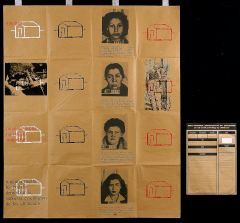
|
Eugenio Dittborn No Tracks (Airmail Painting no. 13) 1983 Photo screenprint - Chilean - stays during dictatorship - mailed art to be in exhibition> way to avoid censorship |
|

|
Alfredo Jaar Studies of Happiness 1979-1981 Santiago Chile -Chilean - '82 to NYC before democracy - avoided censorship by simplicity of question> lead to people thinking about their happiness under the dictatorship |
|
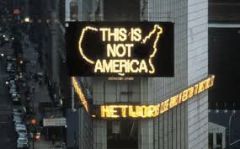
|
Alfredo Jaar This is Not America (A Logo for America) 1987 Digital video disk color animation of spectacular sign Times Square NYC |
|
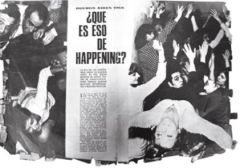
|
Roberto Jacoby et al Happening for a Dead Boar 1966 Pres clipping |
|
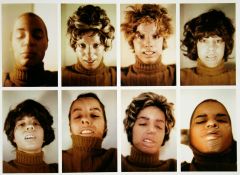
|
Ana Mendieta Untitled (Facial Cosmetic Variations) 1972 Color photographs - Cuban -'48 born - '61 sent to US for catholic education>Iowa for school -Carl Andre (Murder?) |
|
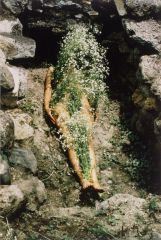
|
Ana Mendieta Image from Yagul 1973 Color Photograph |
|

|
Felix Gonzalez-Torres Untitled 1989 Billboard -Cuban -Born '57>in Cuba until '70> '79 NYC to Pratt>Whitney Museum Independent Study Program>ICP MFA |
|
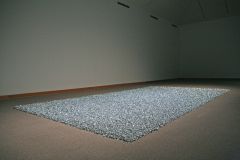
|
Felix Gonzalez-Torres Untitled (Placebo) 1991 Candies, wrapped in silver cellophane ideal weight 1,000-1,200 lbs |
|
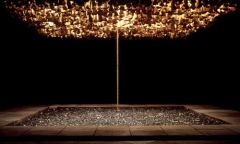
|
Cildo Meireles Missao/Missoes (How to Build Cathedrals) 1987 600,000 coins, 800 communion wafers, 2000 cattle bones, 80 paving stones, and black cloth -Ultra Baroque |
|
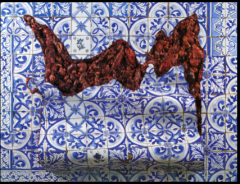
|
Adriana Varejao Carpet-Style Tilework in Live Flesh 1999 Oil, foam, aluminum, wood, and canvas -Ultra Baroque |
|
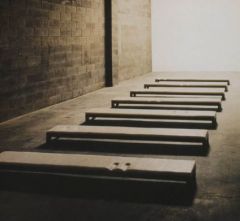
|
Valeska Soares Sinners 1995 Cast Beeswax, hair, and metal -Ultra Baroque |
|
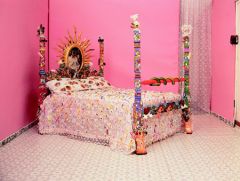
|
Pepon Osorio La Cama (The Bed) 1987 Mixed Media -Ultra Baroque |
|
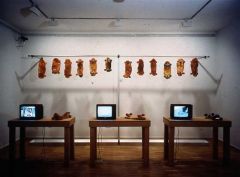
|
Jose Antonio Hernandez-Diez The Brotherhood 1997 Metal structure, pork rinds, skateboard wheels, trough, and three video monitors on stands -Ultra Baroque |
|
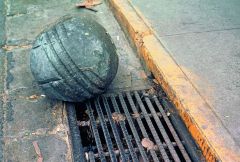
|
Gabriel Orozco Yielding Stone 1992 Plasticine - Born Mexico '62>Study in Mexico City>Travel to Spain and Brazil -Seen as nomadic artist -Lives in NYC and Mexico City -weight of his body - accumulates debris and takes on imprint -uses and is critical of commodity while not using autonomy of the art world -disrupts ideas of aesthetic purity of rt and life as political and social as separate -productively misreading European and US art in different cultural context -post studio artist |
|
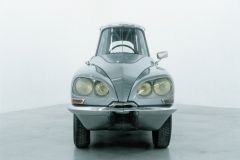
|
Gabriel Orozco La DS 1993 Altered Citroen DS |
|
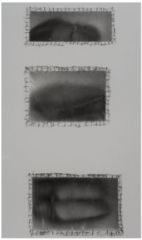
|
Doris Salcedo Atrabiliarios (Defiant) 1993 Plywood, shoes, cow bladder, and surgical thread -Bogota -NYU MFA > Bogota undergrad |
|
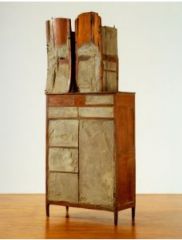
|
Doris Salcedo Untitled 1995 Wood, cement, steel, cloth, and leather |
|
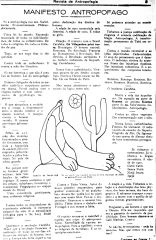
|
Oswald de Andrade, Cannibalist Manifesto with drawing by Tarsila do Amaral in Cannabalist Review May 1928 "critical swallowing of cultural legacy"not a passive receiver of European culture product is "decolonized" active stance- creating a position for one's self |
|
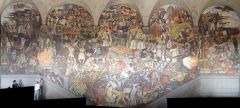
|
Diego Rivera History of Mexico Conquest to 1930 1929-1930 Fresco National Palace Mexico City tool to educate to a largely illiterate society create a common sense of citizenship and national identity |
|
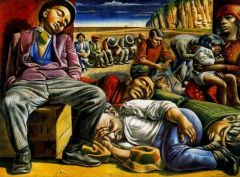
|
Antonio Berni Unemployed 1934 Tempera on Burlap - New Realism -Son of Italian immigrants - late 20s to Paris -Finds De Chirico>assists Siqueros -focus on the marginalized of society>portraits>journalistic element |
|
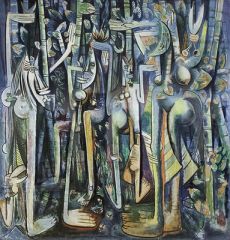
|
Wilfredo Lam The Jungle 1943 Gouache on paper mounted on canvas -born in Cuba- mom Afro-Cuban dad Chinesestudied in Havana -'29-'38 goes to Spain- fights in Civil War - Paris '38 becomes pals with Picasso and surrealists - Flees to Marseilles in '40 because of Nazi occupation, -goes to Martinique, develops relationship with poet Aime Cesaire -sacred space of worship- Santeria, Lam's godmother was a practitioner -mural like scale, immersive -use of accepted avant-garde language to integrate anti-colonialist subject matter |
|
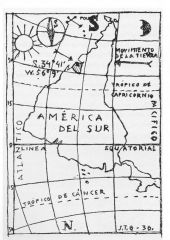
|
Jaoquin Torres-Garcia South America's Inverted Map 1936 Ink on Paper reorienting South America as central world view, specific about Uruguay and Montevideo general about the rest of the continent |
|
|
Argentina History and Avant-garde |
-independence 1816 -late 19th c. and early 20th c. mass immigration from W. Europe, Spain, Germany, Italy and E. Europe -1930s largest economy in s. America and great economic inequity - '30 military coup and rule -WWII neutral but perceived as with axis -Juan Domingo Peron> military and political leader '46-'55 and '73-'76> focused on industrialism -40's avant-garde against social realism>not interested in the subconscious- interested in invention that demand collective action from viewers -60's post WWII boom faded> hyper inflation> labor unrest> questions the costs of building boom - '55-'66 attempt to restore democracy - '66-'73 military dictatorship - '76 - '83 military dictatorship -repressive government -'55-'83 in and out of dictatorship-'60s unsuccessful attempt at democracy -70's - '83 the Dirty War, 9,000-30,000 killed |
|
|
Madi |
-Argentinian - '46 -concrete art invention association -lead by Tomas Moldonado and Bayley - Marxist - had relationship to Dada>nonsensical - there is an eccentricity in Madi that is not in Concrete Interventionism> Concrete models action Madi executes that action - Kosice and Arden Quin created art journals -saw themselves as solving problems of painting via irregularly shaped frames |
|
|
Concrete Art |
-'30s term by Van Dunesburg (Neoplasticist) -abstract art that rejects nature -Max Bill embraces this term -Abstract art based on mathematical principles -irregular frame -coplanar -use of non fine art materials -aim is accessibility of art>emphasis on communication |
|
|
Brazil History |
- Capital moved to Brasilia>push towards modernization and away from agriculture -'45-'64 democracy -Bossa Nuova- aimed for Brazilian tourists - '68-70s military dictatorship>'64-'68 less intense |
|
|
Neo-concrete |
- '50s rejection of figuration>stripping to the most essential elements> focus on optics, getting rid of culture specificity> aim of universal language via optics and mathematics -1951 Sao Paulo Biennial founded -Train in own country them travel to Europe and US later -Looking at European avant-garde through periodicals, museums, and biennials -'59 neo-concrete manifesto and exhibition -neo-concrete grew out of frente -works treat eyes as machine vs. a body> bodily subject hood and experience of body -phenomenology -nothing exists as art object without human engagement |
|
|
Ruptura |
-neo-concrete -Brazil -'52 -no naturalism -continuity is no longer possible>art based off of math and physics>art is equal -saw themselves as fulfilling more ideas than European avant-garde>taking it further |
|
|
Frente |
-Neo-concrete -Brazil -'54-'56 exhibitions -Lack of stylistic uniformity> not just abstract -Place for experimentation>not a school> Shared seriousness of research and shared ethical and creative discipline - saw abstraction as transhistorical>not specific to technology -saw themselves as fulfilling more ideas than European avant-garde>taking it further -used non fine art materials |
|
|
Phenomenology |
- subject hood is less about thought and more about a bodily experience - what separates us from an inanimate object -art is more then sum of its parts, more than practice of theory -expressive use of geometry and censorial experience -eye body vs. eye machine |
|
|
Venezuela History |
-Dictatorship ends '39 return to democracy - desire for modernization - '48 military coup until '58>Perez Jimenez - '58 back to democracy -Villanueva>architect - Economic basis oil - '48 shifts to abstraction which coincides with architectural boom |
|
|
Kinetic Art |
-Venezuela's geometric abstraction - Phenomenology -sculpture itself as a body, not a passive viewer -Saw themselves in line with protests in Paris '68 and Mexico City Olympics '68 |
|
|
Mexico History |
- post WWII building boom - '68 Mexico City Olympics, massacre, covered up -'68 Olympics Tommie Smith Black Panther fist - 60's PRI political parts dominates politics until '90s > dedicate a lot of resources towards tourism> cheap peso, controlled inflation -60's labor protest suppression |
|
|
Pop Art |
-London '50s and NYC '60s -art of industrialism>adopt imagery of mass production and modern technology -anonymity of surface treatment>flat color -British uses more narrative>US more emblematic presentation -Using objects to view Man |
|
|
New Objectivity |
-not towards the unification of the avant-garde -urgency of and criticallity of the political, social, and artistic climate at the time, not the aesthetic continuity - use of realism -deal with Brazilian identity, how it is presented vs how it actually is (Favelas) |
|
|
Conceptual Art |
- work that demphasizes perceptual encounters in favor of ideas -centering critique on the fixed autonomous art object - fusion of site with work and display context -increased emphasis on public and distribution -'60s |
|
|
Conceptualism |
-Broader than conceptual art - 60's and 70's shift in attitude -reducing importance of art object -increased importance on social, political, and economic realities |
|
|
Ideology |
Integrated assertions theories and aims that are used by systems of powers |
|
|
Uruguay Context |
-'73-'84 military oppressive dictatorship - 1/5 of male population leaves |
|
|
Chile Context |
-'73 military overthrew > Allende democratically elected and socialist> US sees them as communist threat - '88 Pinochet voted out, Pinochet said he was bringing prosperity, jobs, and happiness to Chile - '89 democracy, political student social dissonance repressed |
|
|
Cuban Context |
-'59 Cuban Revolution> Batista fled Havana, Castro took power, socialist -many US attempts to assassinate Castro - '61 Bay of Pigs -US trade embargo -social and political repression, homosexuality especially |
|
|
Neo Baroque/Ultra Baroque |
-use of aesthetics and tactics of Baroque> ornamentation, high contrast, grotesque forms -strategy for cultural resistance>allows space for agency and resistance -leads to post Latin American views of identity |
|
|
Art of Everyday *** |
-Artists of 90's taking from '60s and '70's -utilization of ready made |
|
|
Interpelation |
-ideological hailing -process by which ideology addresses the forces producing him/her as a subject -sculpture as medium of interpelation |
|
|
Columbia Context |
-'48-'58 the violence>armed civil war -60's - 90's extreme civil violence and narcotics violence -guerrilla group takes over Justice palace> massacre and destroys building |

